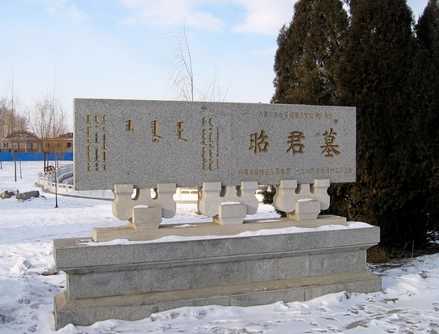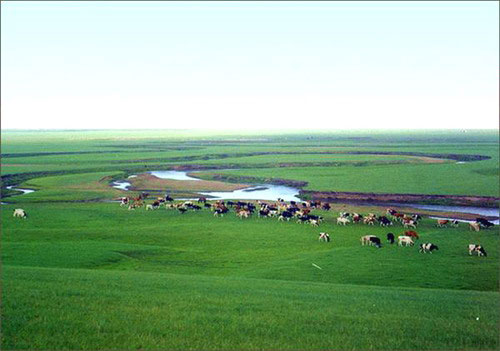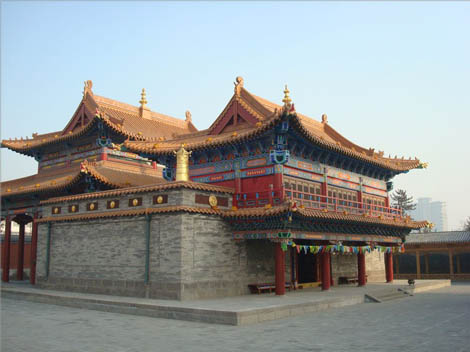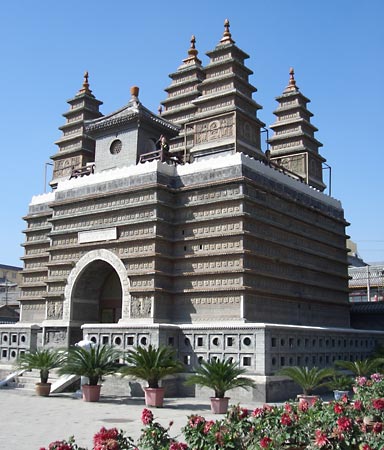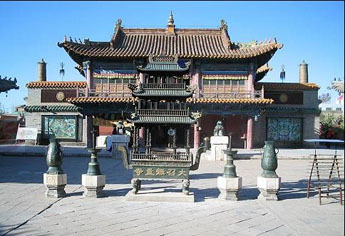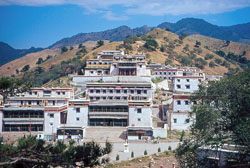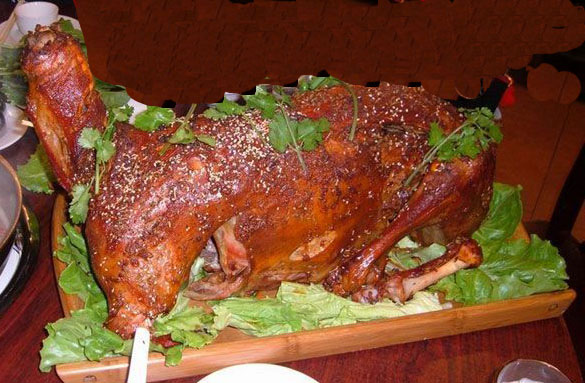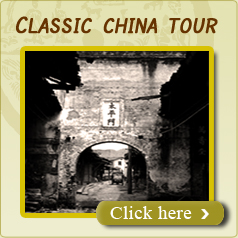Inner Mongolia Tourism

-
Province:Inner Mongolia (Chinese: 内蒙古, Pinyin:Nèi Měnggǔ)
-
Population :23,840,000
-
Area :1,183,000 km2 (457,000 sq mi)
-
Overview:The Inner Mongolia Autonomous Region, bordering to the north with both the Republic of Mongolia and Russia, is the widest province in China (by its latitude). It is the third largest Chinese province (over 1.1 million square kilometers or 424,736 square miles) but not very populated.
Overview
Inner Mongolia is a Mongol autonomous region of the People's Republic of China, located in the northern side of the country. Inner Mongolia borders, from east to west, the provinces of Heilongjiang, Jilin, Liaoning, Hebei, Shanxi, Shaanxi, Ningxia Hui Autonomous Region, and Gansu, while to the north it borders the Republic of Mongolia and Russia. It is the third-largest subdivision of China spanning about 1,200,000 km² or 12% of China's total land area.
In
Mongolian, the region is known as öbür mongγol where öbör can mean
south, inner, front, bosom, breast. This is probably related to
traditional Mongolian and Manchu world view where south is regarded as
front, right as west, left as east and north as back.
Han Chinese are the largest ethnic group, constituting about 80% of the population. While the Hetao region along the Yellow River has always alternated between farmers from the south and nomads from the north, the most recent episode of Han Chinese migration began in the early 18th century with encouragement from the Manchu Qing Dynasty, and continued into the 20th century.
Mongols are the second largest ethnic group, comprising about 17% of the population. They include many diverse Mongolian-speaking groups; groups such as the Buryats and the Oirats are also officially considered to be Mongols in China. Many of the traditionally nomadic Mongols have settled in permanent homes as their pastoral economy was collectivized during the Maoist Era. Other ethnic groups include the Daur, the Evenks, the Oroqin, the Hui, the Manchus, and the Koreans.
Life here is miracle. Riding on a galloping horse, strolling around temples and mausoleums, or spending a night in a yurt while eating and drinking with voluble Mongolian family, this will be a memorable experience of seeking Genghis Khan's footprint.
Know More
A brief history
Throughout most of history and time, central and western Inner Mongolia, especially the Hetao region, alternated in control between Chinese agriculturalists in the south and Xiongnu, Xianbei, Khitan, Jurchen, Tujue, and Mongol nomads of the north. Eastern Inner Mongolia is properly speaking a part of Manchuria, and its historical narrative consists more of alternations between different groups there rather than the struggle between nomads and Chinese agriculturalists.
During the Zhou Dynasty, central and western Inner Mongolia (the Hetao region and surrounding areas) were inhabited by nomadic peoples such as the Loufan, Linhu, and Dí, while eastern Inner Mongolia was inhabited by the Donghu. In Warring States Period, King Wuling (340–295 BC) of the state Zhao based in what is now Hebei and Shanxi provinces pursued an expansionist policy towards the region, he defeated the Linhu and Loufan and created the commandery of Yunzhong near modern Hohhot. King Wuling of Zhao also built a long wall stretching through the Hetao region.
In 221 BC, after creating the first unified Chinese empire , emperor Qin Shihuang sent the general Meng Tian to drive the Xiongnu from the region, and incorporated the old Zhao wall into the Qin Dynasty Great Wall of China. He also maintained two commanderies in the region: Jiuyuan and Yunzhong, and moved 30,000 households there to solidify the region. After the Qin Dynasty collapsed in 206 BC, these efforts were abandoned.
During the Western Han Dynasty, Emperor Wu sent the general Wei Qing to reconquer the Hetao region from the Xiongnu in 127 BC. After the conquest, Emperor Wu continued the policy of building settlements in Hetao to defend against the Xiong-Nu. In that same year he established the commanderies of Shuofang and Wuyuan in Hetao. At the same time, what is now eastern Inner Mongolia was controlled by the Xianbei, who would later on eclipse the Xiongnu in power and influence.
During the Eastern Han Dynasty (25–220 AD), Xiongnu who surrendered to the Han Dynasty began to be settled in Hetao, and intermingled with the Han immigrants in the area. Later on during the Western Jin Dynasty, it was a Xiongnu noble from Hetao, Liu Yuan, who established the Han Zhao kingdom in the region, thereby beginning the Sixteen Kingdoms period that saw the disintegration of northern China under a variety of Han and non-Han (including Xiongnu and Xianbei) regimes.
The Sui Dynasty (581–618) and Tang Dynasty (618–907) re-established a unified Chinese empire, and like their predecessors they conquered and settled people into Hetao, though once again these efforts were aborted when the Tang empire began to collapse. Hetao (along with the rest of what now consists Inner Mongolia) was then taken over by the Khitan Empire (Liao Dynasty), founded by the Khitans, a nomadic people originally from what is now the southern part of Manchuria and eastern Inner Mongolia. The Khitans were later replaced by the Jurchens, precursors to the modern Manchus, who established the Jin Dynasty over Manchuria and northern China.
In 1206 Genghis Khan unified the Mongol tribes and founded the Mongol Empire, the Tangut Western Xia empire was ultimately conquered in 1227, and the Jurchen Jin Dynasty fell in 1234. In 1271, Genghis grandson Khubilai established the Yuan Dynasty. Khubilai's summer capital Shangdu (a.k.a Xanadu) was located near present-day Dolonnor.
After the Yuan Dynasty was evicted by the Han-led Ming Dynasty in 1368, the Ming rebuilt the Great Wall of China at its present location, which roughly follows the southern border of the modern Inner Mongolia Autonomous Region (though it deviates significantly at the Hebei-Inner Mongolia border). The Ming established the Three Guards composed of the Mongols there. After the Tumu incident in 1450, Mongols flooded south from Northern Mongolia to Southern Mongolia. Thus from then on until 1635, Inner Mongolia was the center of the Northern Yuan Dynasty.
In the early 17th century, the Manchus gained control of the Inner Mongolian tribes, then invaded Ming Dynasty in 1644, bringing it under the control of their Qing Dynasty. Under the Manchu Qing dynasty (1644–1912), Mongolia was administered in a different way for each region: Ordinary Mongols were not allowed to travel outside their own leagues. While there had been Han Chinese farmers in what is now Inner Mongolia since the time of Altan Khan, mass settlement began in the late nineteenth century. The Manchus were becoming increasingly sinicized, and faced with the Russian threat, they began to encourage Han Chinese farmers to settle in both Mongolia and Manchuria.
During the Republic of China era, Outer Mongolia regained independence. At the same time, Inner Mongolia was reorganized into provinces.
Nadaam Festival
A great time to visit Inner Mongolia is during Nadaam Festival when tradional Mongolian competitions such as wrestling, archery and horse and camel races occur. The festival is the high point for the Mongolians and every year familises from throughout the region congregate around Hohhor in a makeshift campground. The festival's date depends on the Mongolian lunar calendar, but usually falls from mid-July to mid-August.
Must see
The grassland is amazing, herds of horses and sheep are roaming freely while nomadic herdsmen watch over their flock, and a stretch of blue sky that eventually touches the green plains far off in the horizon.
Riding on a galloping horse, spending a night in a yurt, having a down-home traditonal Mongolian meal, people here are friendly and all smiles...this can be your memorable experiences in Inner Mongolian.
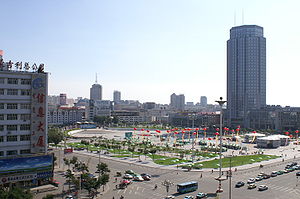
Hohhot, the capital of the Inner Mongolia Autonomous Region, may not immediately stir images of a rough and ready frontier, but what this cosmopolitan city does offer is a gateway to the majesty of the grasslands. Hohhot, is really the Green Pastures of the North...more
